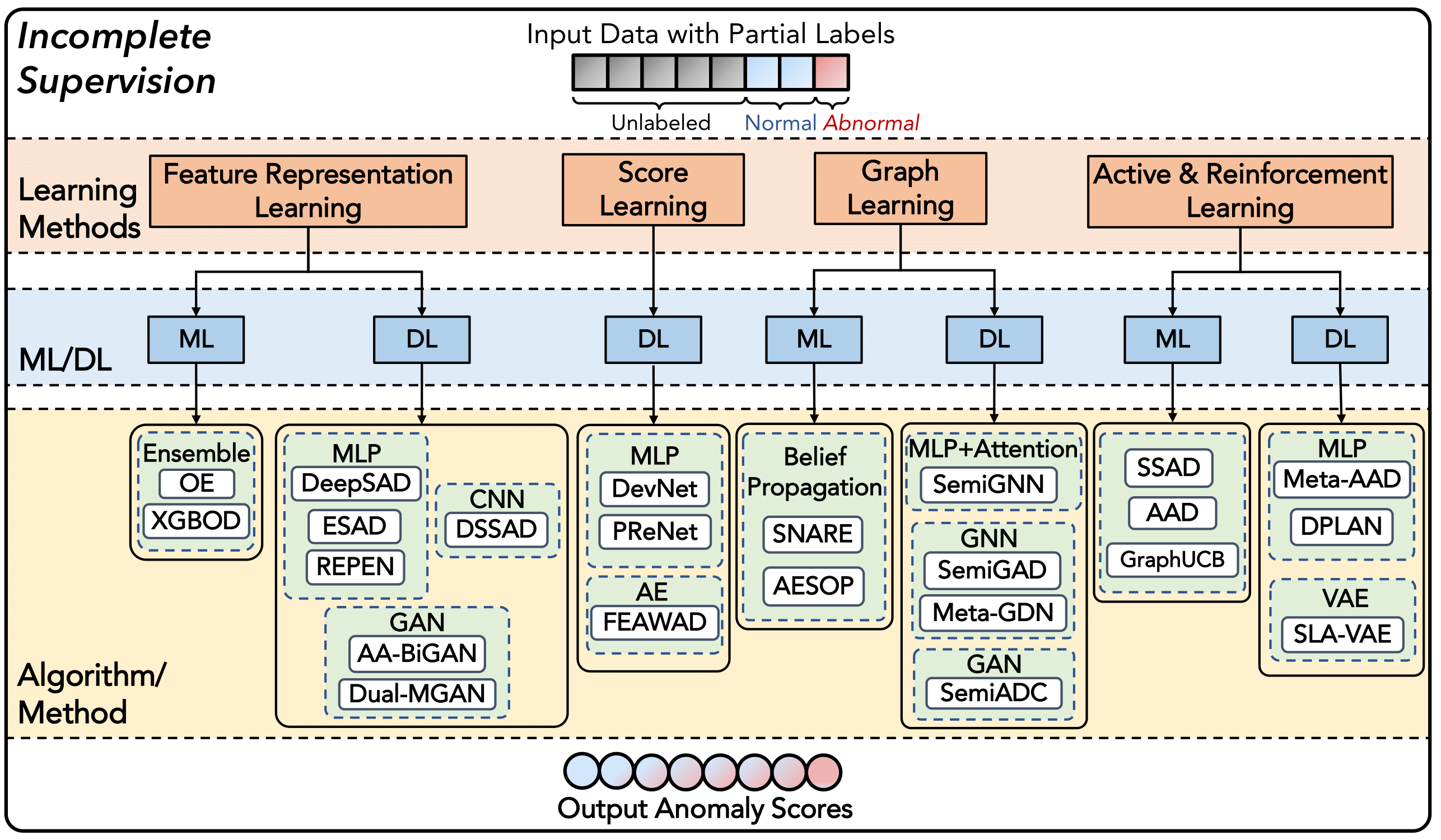Weakly Supervised Anomaly Detection: A Survey
Anomaly detection (AD) is a crucial task in machine learning with various applications, such as detecting emerging diseases, identifying financial frauds, and detecting fake news. However, obtaining complete, accurate, and precise labels for AD tasks can be expensive and challenging due to the cost and difficulties in data annotation. To address this issue, researchers have developed AD methods that can work with incomplete, inexact, and inaccurate supervision, collectively summarized as weakly supervised anomaly detection (WSAD) methods. In this study, we present the first comprehensive survey of WSAD methods by categorizing them into the above three weak supervision settings across four data modalities (i.e., tabular, graph, time-series, and image/video data). For each setting, we provide formal definitions, key algorithms, and potential future directions. To support future research, we conduct experiments on a selected setting and release the source code, along with a collection of WSAD methods and data.
PDF Abstract



